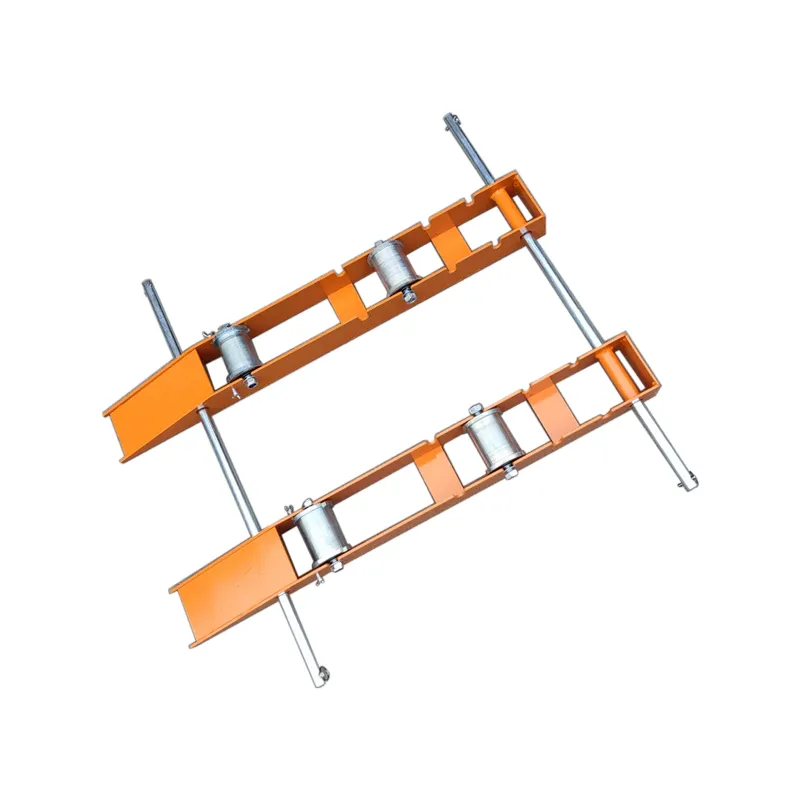


Nov . 18, 2024 16:37 Back to list
wire clamp
Understanding Wire Clamps An Essential Component of Electrical and Mechanical Systems
Wire clamps, often overlooked, are essential components in a variety of electrical and mechanical applications. These small yet significant devices serve the primary function of securing wires, cables, and hoses in place, ensuring safety, organization, and efficiency in both industrial and residential environments.
What is a Wire Clamp?
A wire clamp is a fastening device designed to hold wires together or to secure them to a surface. They come in various shapes, sizes, and materials to accommodate different applications. Common types of wire clamps include the cable clamp, hose clamp, and wiring harness clamps. Each type serves specific purposes and is chosen based on the needed strength, size, and environmental conditions.
Types of Wire Clamps
1. Cable Clamps These are typically used for organizing and holding together multiple cables. They can be made from plastic, rubber, or metal and come in various forms, such as adhesive-backed clamps for simple installations or screw-mounted versions for more permanent attachments.
2. Hose Clamps Often used in automotive and plumbing applications, hose clamps secure hoses over fittings. They can be adjusted to fit various diameters, providing a tight seal to prevent leaks.
3. Wiring Harness Clamps Found in automotive and electrical systems, these clamps maintain the organization of wiring harnesses, protecting them from wear and tear while ensuring that they do not interfere with mechanical components.
Applications of Wire Clamps
Wire clamps have a wide array of applications across multiple industries, including
- Automotive In vehicles, wire clamps are crucial for keeping wiring harnesses secured and organized. They prevent wires from rubbing against sharp edges, which can lead to insulation damage and electrical shorts.
- Electronics In electronic devices, clamps are used to hold wires in place, ensuring that connections remain stable during operation. This prevents signal loss and maintains the integrity of the device.
- Construction In construction settings, wire clamps help organize electrical and communication wiring, supporting a neat and efficient installation process. This is especially important for safety and compliance with building codes.
wire clamp

- Aerospace Wire clamps play a critical role in aircraft where they help secure wiring and cabling in extreme environments. The reliability of these clamps can be vital for the safe operation of flight systems.
Benefits of Using Wire Clamps
Using wire clamps offers numerous advantages
1. Safety By securing wires and hoses, wire clamps help to prevent accidents caused by loose or tangled wires, which could lead to electrical shorts, fires, or personal injury.
2. Organization Clamps help maintain a tidy work environment. By keeping wires neatly arranged, they make troubleshooting and maintenance easier and quicker.
3. Durability High-quality wire clamps are designed to withstand various environmental conditions, including exposure to heat, moisture, and chemicals. This durability ensures a longer lifespan for both the clamps and the wires they secure.
4. Cost-Effectiveness Investing in wire clamps can lead to cost savings in the long run. By preventing wear and facilitating easier maintenance, they reduce the risk of costly repairs due to electrical failures or damaged cables.
Choosing the Right Wire Clamp
Selecting the appropriate wire clamp involves considering several factors
- Size Choose a clamp that matches the diameter of the wire or hose to be secured. A clamp that is too large will fail to hold the wire adequately, while one that is too small can damage the insulation.
- Material Depending on the environment, materials such as plastic, stainless steel, or rubber may be more suitable. For example, stainless steel clamps may be optimal in corrosive environments.
- Installation Method Some clamps require tools for installation, while others can be applied easily by hand. Consider the complexity of installation when choosing the right clamp.
In conclusion, wire clamps serve as an indispensable part of various systems, providing safety, organization, and durability. Whether you're working in automotive, construction, or electronics, understanding the different types of wire clamps, their applications, and how to select the right one, can significantly enhance your projects. Investing in quality wire clamps is not just about securing wires; it's about ensuring the functionality and longevity of the systems they support.
Latest news
Hydraulic Crimping Tool – Precision & Heavy-Duty Speed
NewsNov.05,2025
Cable Pulling Swivel | High-Strength, Anti-Twist, Stainless
NewsNov.04,2025
Cable Pulling Tools – Pro-Grade, Safe, Fast Install
NewsNov.03,2025
Hydraulic Crimping Tool – Fast, Precise, Quick-Change Dies
NewsNov.02,2025
Hydraulic Crimping Tool for Sale | Fast, Precise, Heavy-Duty
NewsNov.01,2025
Duct Rodder for Sale – Non-Conductive, Durable Fiberglass
NewsOct.31,2025









